#gardening with natives
Text

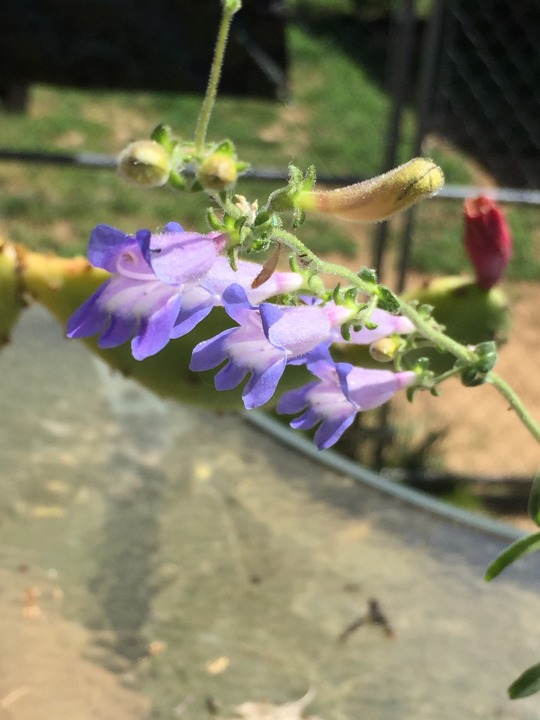
Penstemon laetus grown from locally collected seed 💜💜💜
#california native plants#wildflowers#california wildflowers#growing native plants#gardening with natives#native plants#penstemon#penstemon laetus#Sierra Nevada#habitat gardening#my plants#May#2023#blue flowers
23 notes
·
View notes
Text
#tiktok#andrew_the_arborist#urban gardening#urban landscape#ecofriendly#native wildflowers#eco friendly#eco lawn#native plants#garden#gardening
38K notes
·
View notes
Photo

Plant native plants, y’all!
#lawns#gardens#home and garden#gardening#native plants#ecology#environment#conservation#nature#outdoors
14K notes
·
View notes
Text
Reading native plant gardening books in the library and when I look up my favorite plants they're all like "This plant easily becomes a WEED that is IMPOSSIBLE TO ERADICATE. If you aren't careful, this AGGRESSIVE plant will TAKE OVER YOUR ENTIRE GARDEN, KILL everything else you have planted, RUIN your marriage, and BEAT YOUR ASS"
4K notes
·
View notes
Text
I think it's so adorable that early humans took wild gourds - a tiny fruit that hollows out as it dries, making it float - and decided to make something out of it

they thought the tiny fruit was so good that they bred it for thousands of years, making it larger to form into bowls and cups, and different shapes to become bottles and spoons

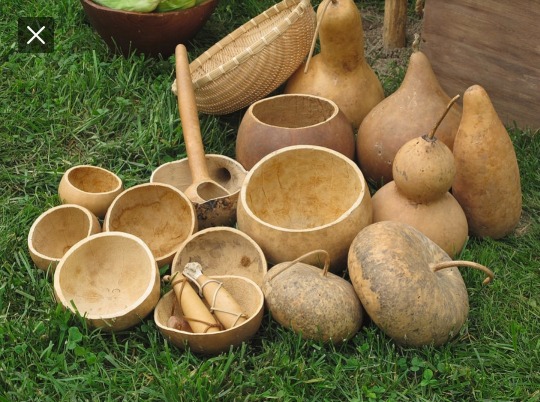
and musical instruments
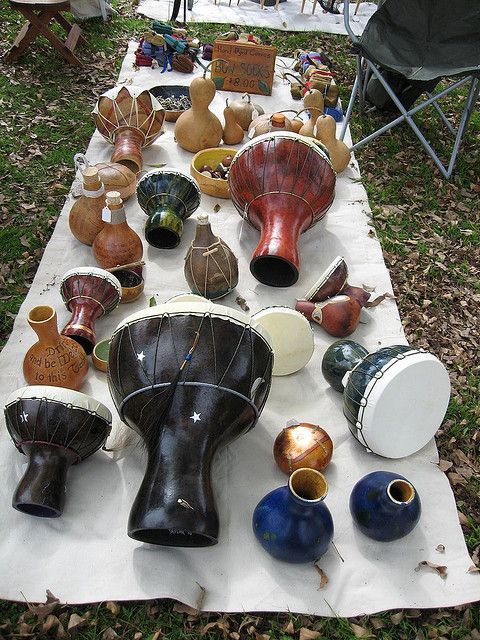

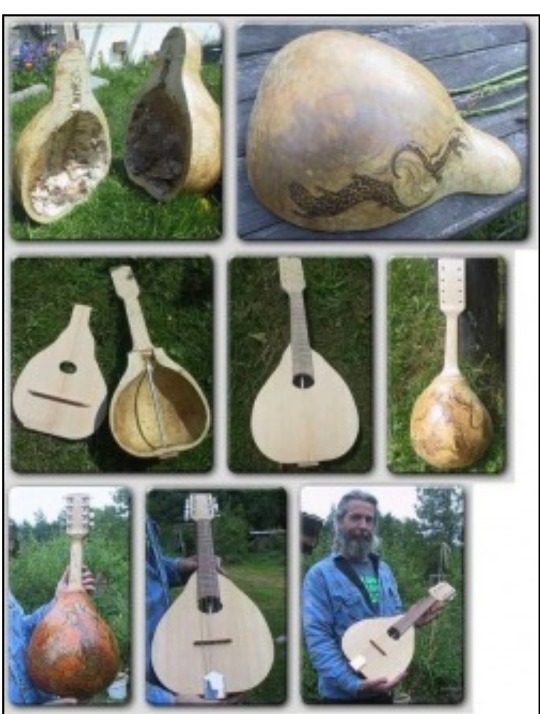
And then, people took the hollow gourds they farmed, and they turned them into houses for birds. We adapted them into the perfect houses for birds, and now there are specific breeds of birdhouse gourd just for making into birdhouses

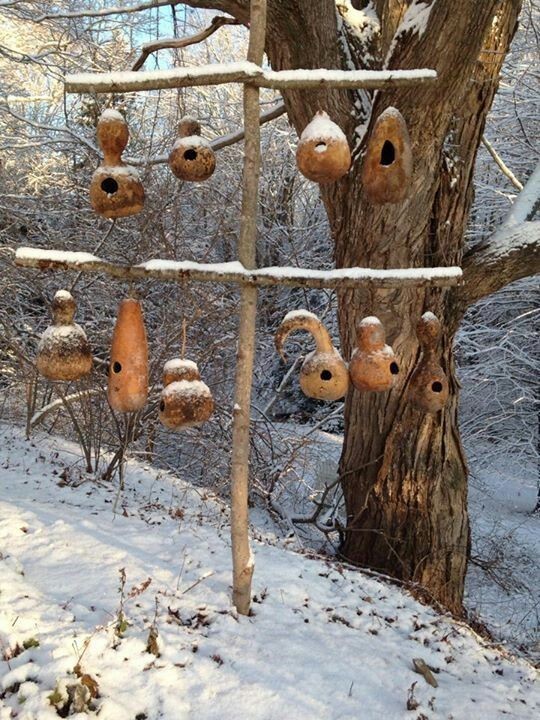
And humans dedicated gardening space and time and thousands of years of breeding to make the gourds so absolutely perfect for birds, that there is a species of bird that lives almost exclusively in them
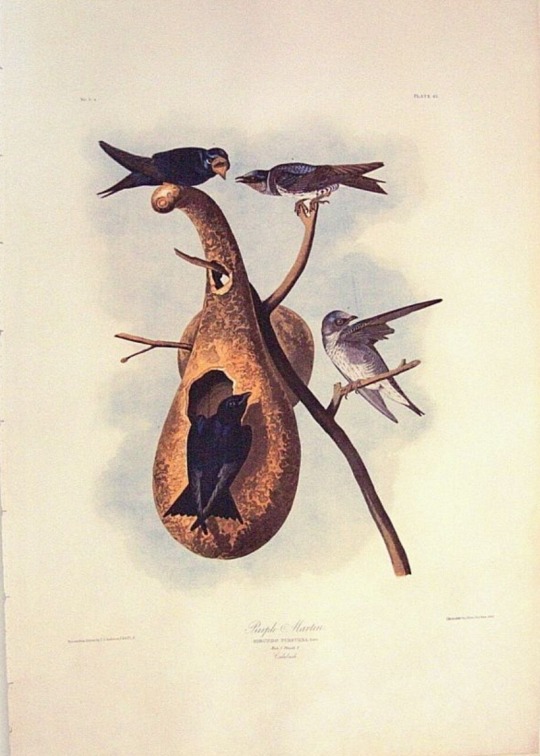
#yes I KNOW i posted about this the other day but *crying* i just love plant domestication and the history of agriculture#and humanity's positive affect on the ecosystems we live in#mine#image IDs in alt text#hmm. I'm gonna tag this#permaculture#just to pspsps @ that community to look at how cool gourds are please everyone grow birdhouse gourds and give cavity nesters places to live#i don't think mine will become fully ripe before i get my first frost :( next year i need to start gourds indoors#i didn't want to grow them before because i didn't have much garden space but now i do and i need to grow all of them#i might be. a little obsessed with gourds. but also i saw a pair of purple martins flying by the road last year#and i had never seen one before then! and i need to see more of them#i have a few hundred barn swallows but i need more birds flying around my house. more!!#and also i have a ton of invasive cavity nesting species around here. house sparrows and starlings.#gotta make up for those things competing with native birds for nest dites#*sites#the invasive birds very often win :/#that's why they're invasive#i really do need to start trapping them....
31K notes
·
View notes
Text
so I found this really cool website that sells native seeds- and you might be asking me "snekdood, haven't you posted an entire list of websites that sell native wildflower seeds that you're going to add on to soon?" and yes that's true, but that's not the kind of native seed im talking about rn.
see, on my quest to find websites that sell native wildflowers, I came across this dope ass website that sells seeds that have been farmed and harvested by ntv people traditionally, i'll let the website do the talking:




so anyways this is the coolest website ever. you can find the wild relatives of chiles on here called chiltepines, you can find different colors of corn and cool squash's, and every seed from whichever farm has it's own lil origin story written about it. you can also find other veggies here that are already commercially available to help fund and support this organization. as well as there being a cool gift shop with a lot of art made by different native folk from all around as well as cookbooks, jewelry, pottery, weavings, and clearly plenty more:

as well as a pantry?? with premade soup mixes??? and i really want to try them now??????
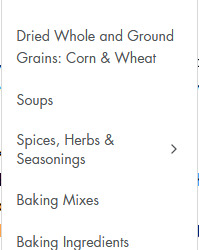
anyways I think its worth snoopin' around bc I'm almost positive you'll see something you think is cool (oh also if you happen to have some seeds passed down from ur family too and ur also native they seem like they would gladly help produce more)
#heirloom seeds#native plants#native wildflowers#native seeds#native seeds search#gardening#farming#seed conservation#heirloom vegetables#vegetables#crops#food#native american#native american traditions#native american heirloom seeds#support indigenous people#indigenous art
2K notes
·
View notes
Text
If you're in the U.S. and want to support local plants and pollinators, I hope you've heard of the Xerces Society. Weird name, but super cool resource for gardening for insect pollinators (and they work for other invertebrate species, too)
They've got regional native plant lists:
They've also got super helpful things in their resources section, including Washington's plan for helping bumble bees:
Another really cool resource is the National Wildlife Federation's list of key stone plant species by ecoregion:
2K notes
·
View notes
Text








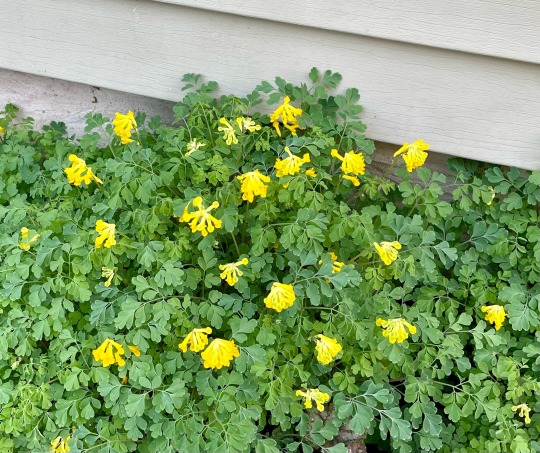
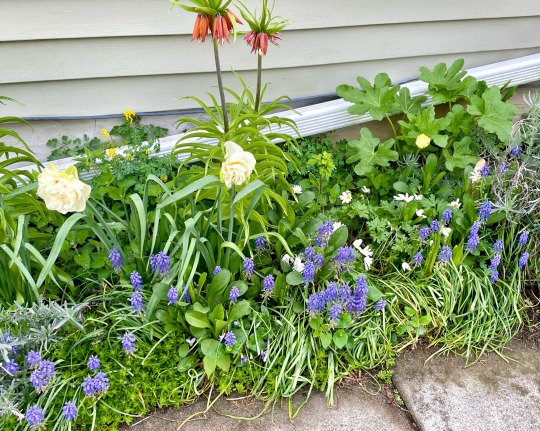
From around the garden. Some native and nonnative plants. It’s a mess and needs a lot of work but it’s bursting with life!
381 notes
·
View notes
Video
Homegrown National park on patios and balconies
https://linktr.ee/homegrownnationalpark
#tiktok#solarpunk#solar punk#homegrown national park#native plants#community garden#gardening#garden#native garden#DIY Garden#DIY
3K notes
·
View notes
Text


Some signs i’ve made for my mom and her native plant garden, shes battling nosy neighbors and the HOA about her “messy gardens”
473 notes
·
View notes
Text

Oregon sunshine (eriophyllum lanatum ‘Siskiyou’) in my garden
#native plants#wildflowers#flowers#yellow flowers#California native plants#pnw native plants#gardening with natives#growing native plants#california wildflowers#my plants#my pics#habitat gardening#pnw wildflowers#may#2023
16 notes
·
View notes
Text



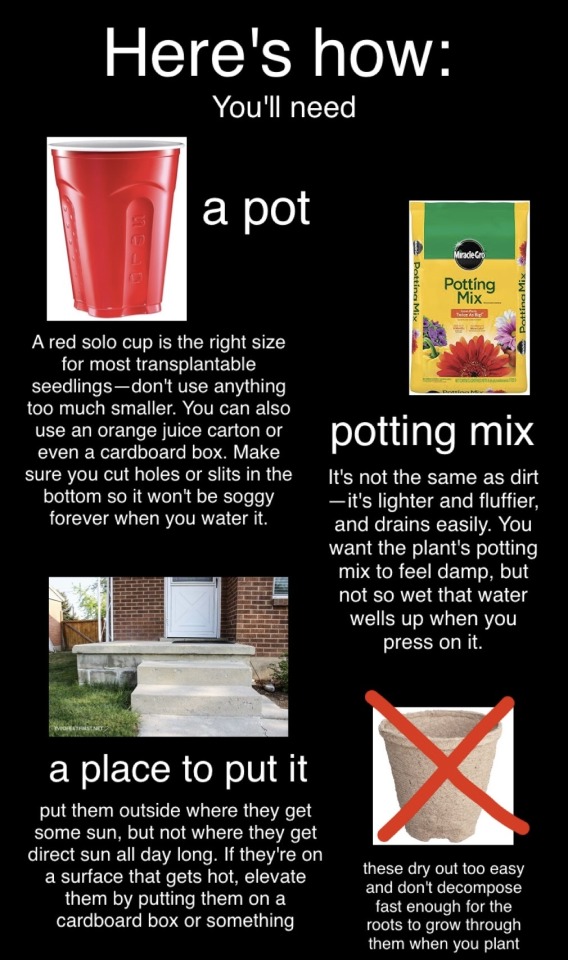



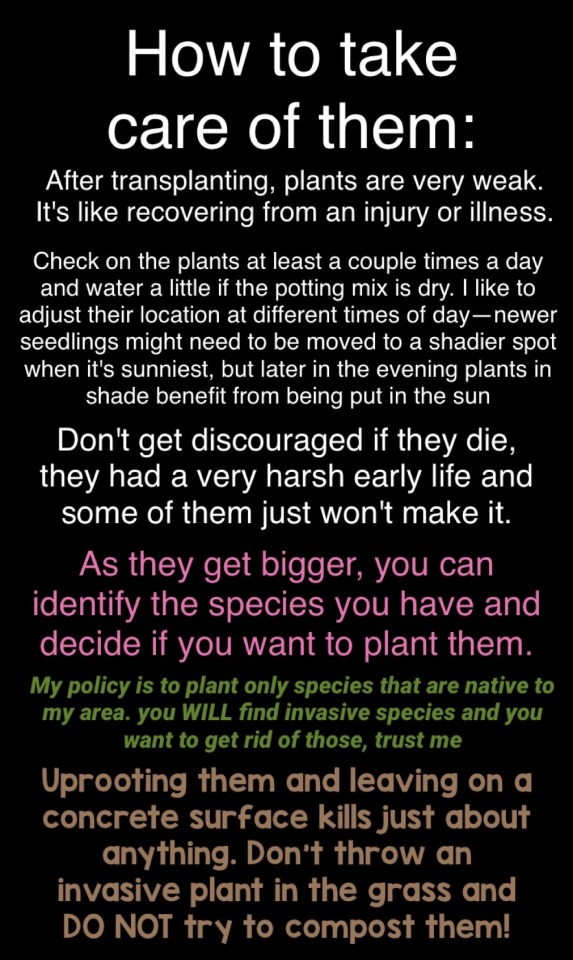

as promised, the transplanting tutorial
most sources make transplanting sound incredibly difficult, but transplanting young seedlings from areas with sparse dirt, like a driveway or roadside, is actually incredibly easy and can get you some great stuff. Once I worked out the method, i've had a very high survival rate
it took me like a month of trial and error to figure this out so you don't have to.
Feel free to repost, no need for credit
28K notes
·
View notes
Text
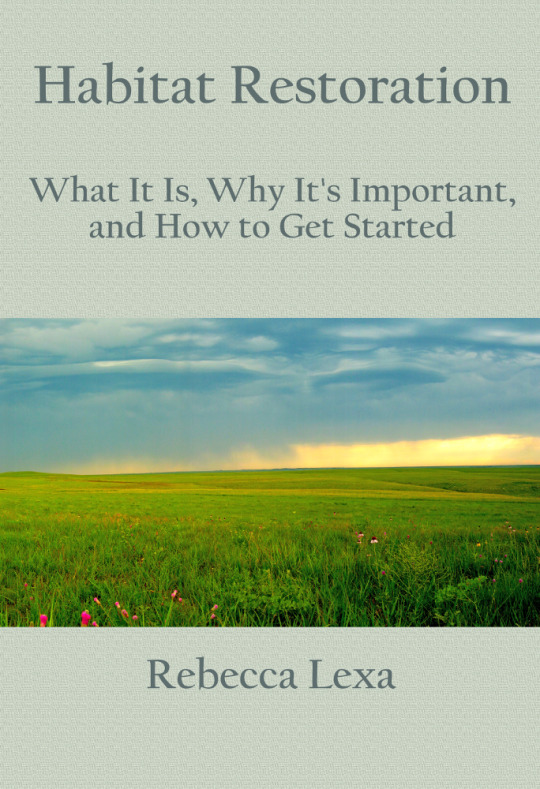
Happy Spring! I've just released my newest quarterly chapbook, Habitat Restoration: What It Is, Why It’s Important, and How to Get Started.
Habitat loss is the single biggest cause of species becoming endangered or extinct. Thankfully, we can help our local animals, plants, and other beings by restoring their habitat–even in our own backyards, gardens, and porches! Get the basics of what you need to know about:
What habitat restoration is
Why it’s important
How to get started
Troubleshooting your restoration project
Further resources
Whether you’re an experienced gardener wanting to grow native plants, or a nature-lover trying to make your corner of the world a little better place, this book will get you started on your own small-scale habitat restoration project.
You can get the ebook for free right now by signing up for my monthly email newsletter at https://rebeccalexa.com/news-updates/. Or if you want to purchase a paperback, it's available for just $6 plus shipping at https://rebeccalexa.com/habitat-restoration/
(Reblogs okay and encouraged--thank you!)
#habitat restoration#restoration ecology#ecology#nature#outdoors#gardening#native plants#invasive species#plants#garden#native species#endangered species#conservation#environment#environmentalism#self publishing#self published#free ebooks
1K notes
·
View notes
Text




Plant of the Day
Saturday 2 September 2023
On this stone wall a colony of Asplenium scolopendrium (hart's-tongue fern) have established along with a Fuchsia magellanica (hardy fuchsia). This hardy fern is normally found growing in damp, shady places in woodlands.
Jill Raggett
#Asplenium#hart's-tonguefern#fern#native#urban landscape#plants#horticulture#gardens#fuchsia#wall#woodland garden#fronds
503 notes
·
View notes
Text
Plant native plants
What's up, northern hemisphere homies? Spring is coming and soon, many of you may be looking toward gardening. When you're deciding what to plant, I have two words for you to consider:
Native. Wildflowers.
There are huge benefits to planting native plants over store-bought plants.
Native plants are already adapted to the local soil. Lots of ornamental plants (especially lawn grass) pull nutrients out of the soil without giving anything back. Native plants are much better at supporting the nutrient cycle.
They are low-maintenance. Because native plants are already adapted to your local conditions, they need much less care and maintenance. You can save time and money on fertilizers, pesticides, herbicides, and water.
Native plants support the local ecosystem. The plants have evolved alongside with animals, meaning they feed local insects, birds, and other animals. They also provide shelter for wildlife, attract pollinators, and boost the local animal populations.
They increase biodiversity. In my country, huge swaths of native land have been bulldozed and replaced with ecologically damaging farmland, lawns, and non-native ornamental plants. By planting natives you help restore the ecological balance and can get an idea of what the land used to look like. Planting natives on your property can spread the seeds to other locations through wind or animal dispersal.
They are sustainable. You can harvest seeds off of your natives and grow your garden, give them to other people, or scatter them in the wild.
They are diverse and unique. How many gardens are full of the same old standards like peonies, daffodils, and tulips? Native plants often look much more unique and interesting than the same old ornamentals. Here are some local species from my area that I think are much better looking than a lot of ornamental cultivars. (top to bottom: prairie blazing star, showy tick trefoil, Virginia bluebell, dutchman's britches, bottle gentian).



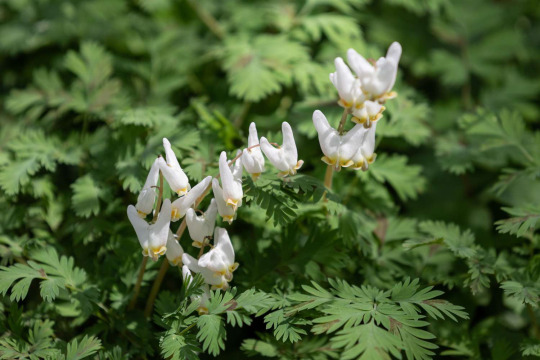
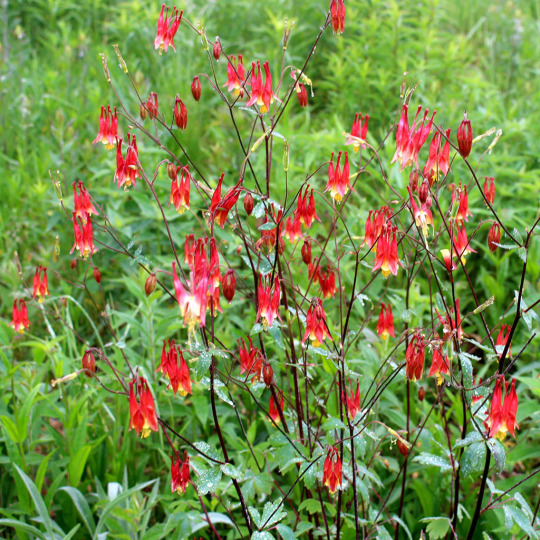

Do some research about which species are local to your area and see if your local garden stores have any native species. A lot of places will have naturalist groups who will sell native plants or their seeds or can point you to places you can get them. You may be able to harvest seeds directly off the plant if there are natural areas near you. However if you are harvesting natural plants, check local laws and see who owns the property. The general rule of thumb is that for abundant native species, you can safely harvest about half of the seeds without impacting the regrowth next year. For rarer species, you shouldn't take more than a quarter. If a lot of people are harvesting in the same area, they may be taking too much.
154 notes
·
View notes
Text
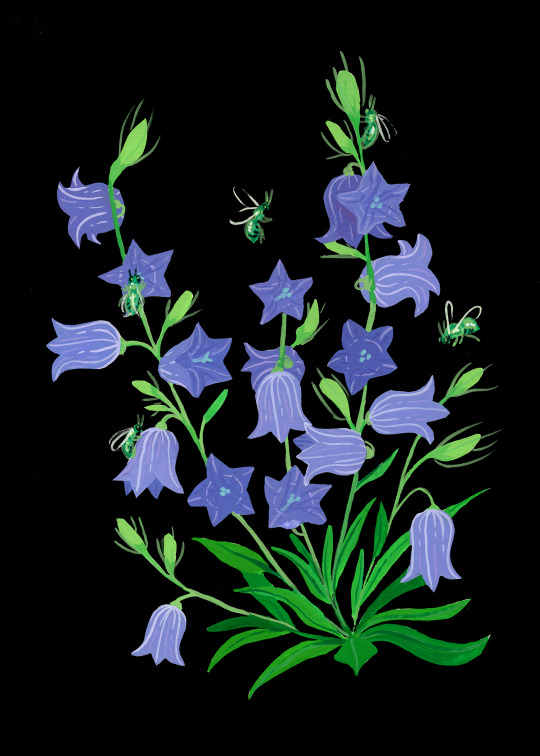
🪻🌿 🐝 🌱 ✨ // campanula & green metallic sweat bees // gouache on hot press paper // part of my native pollinators series
Tiny sweat bees are underlooked native pollinators. These solitary little guys nest in the ground and pollinate an incredibly wide array of native wildflowers and food crops, including squashes, melons, blueberries, and cranberries. They also love the bright purple bells of wild campanula!
#my art#gouache#illustration#cottagecore#artists on tumblr#art#botanical#wildflowers#native pollinators#native gardening#native plants#campanula#harebell#green metallic sweat bee#gardencore#naturecore#botanical illustration#jordan beck#jordan beck illustration#jordanillustrates
327 notes
·
View notes